Abstract
A little used and often confused design, capable of comparing two treatments within a single subject, has been termed, variously, a multielement baseline design, a multiple schedule design, and a randomization design. The background of these terms is reviewed, and a new, more descriptive term, Alternating Treatments Design, is proposed. Critical differences between this design and a Simultaneous Treatment Design are outlined, and experimental questions answerable by each design are noted. Potential problems with multiple treatment interference in this procedure are divided into sequential confounding, carryover effects, and alternation effects and the importance of these issues vis-a-vis other single-case experimental designs is considered. Methods of minimizing multiple treatment interference as well as methods of studying these effects are outlined. Finally, appropriate uses of Alternating Treatments Designs are described and discussed in the context of recent examples.
Full text
PDF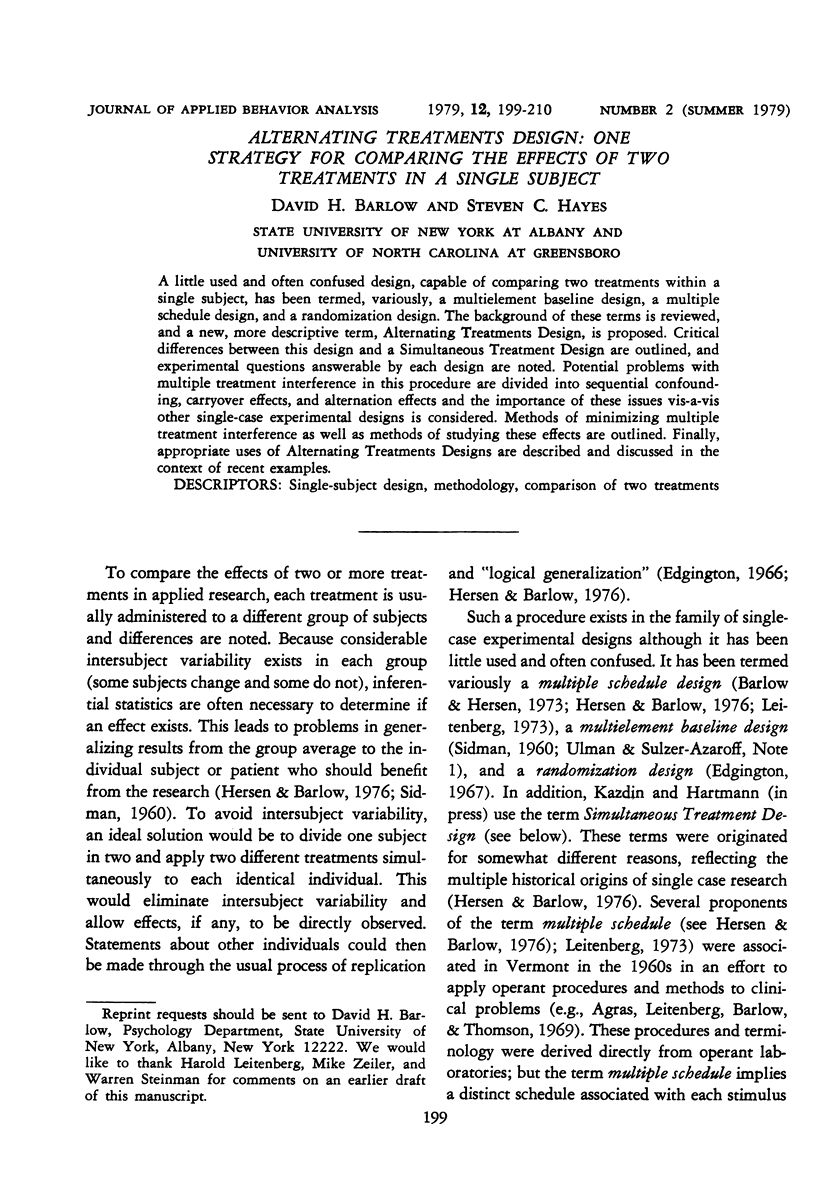
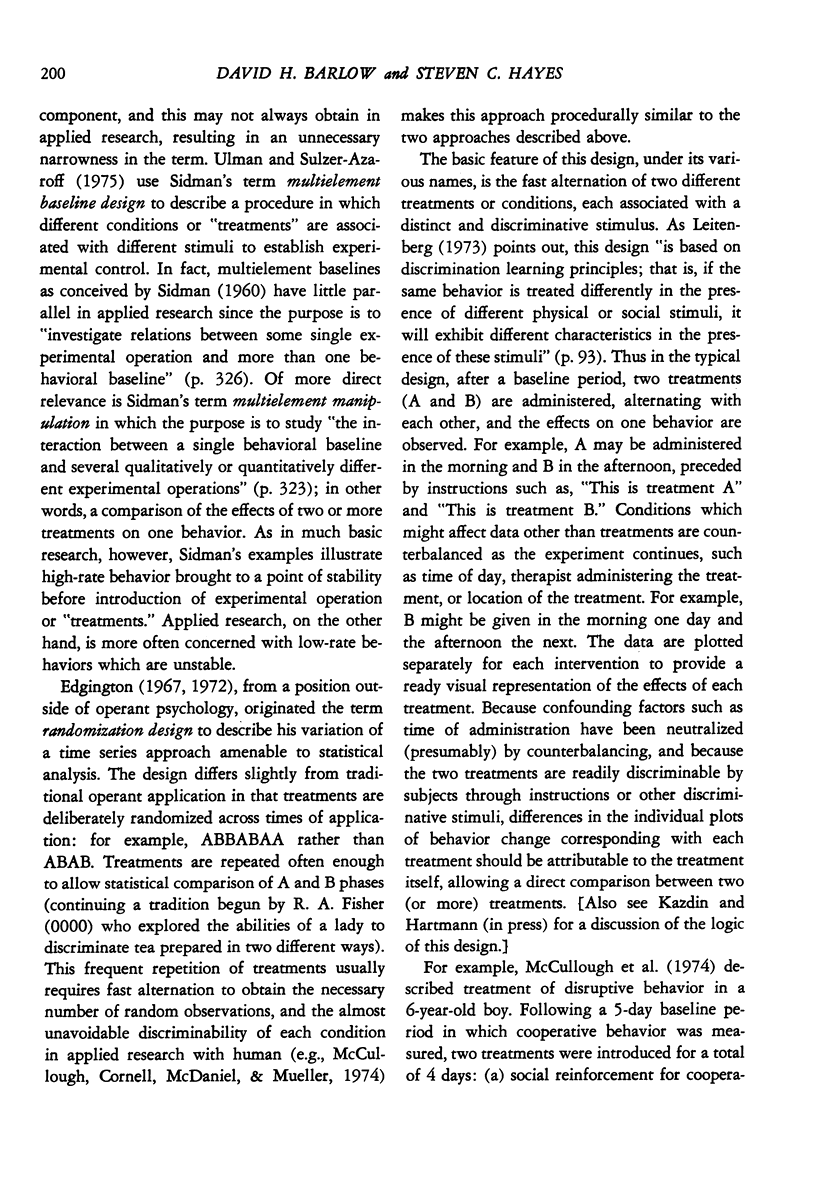
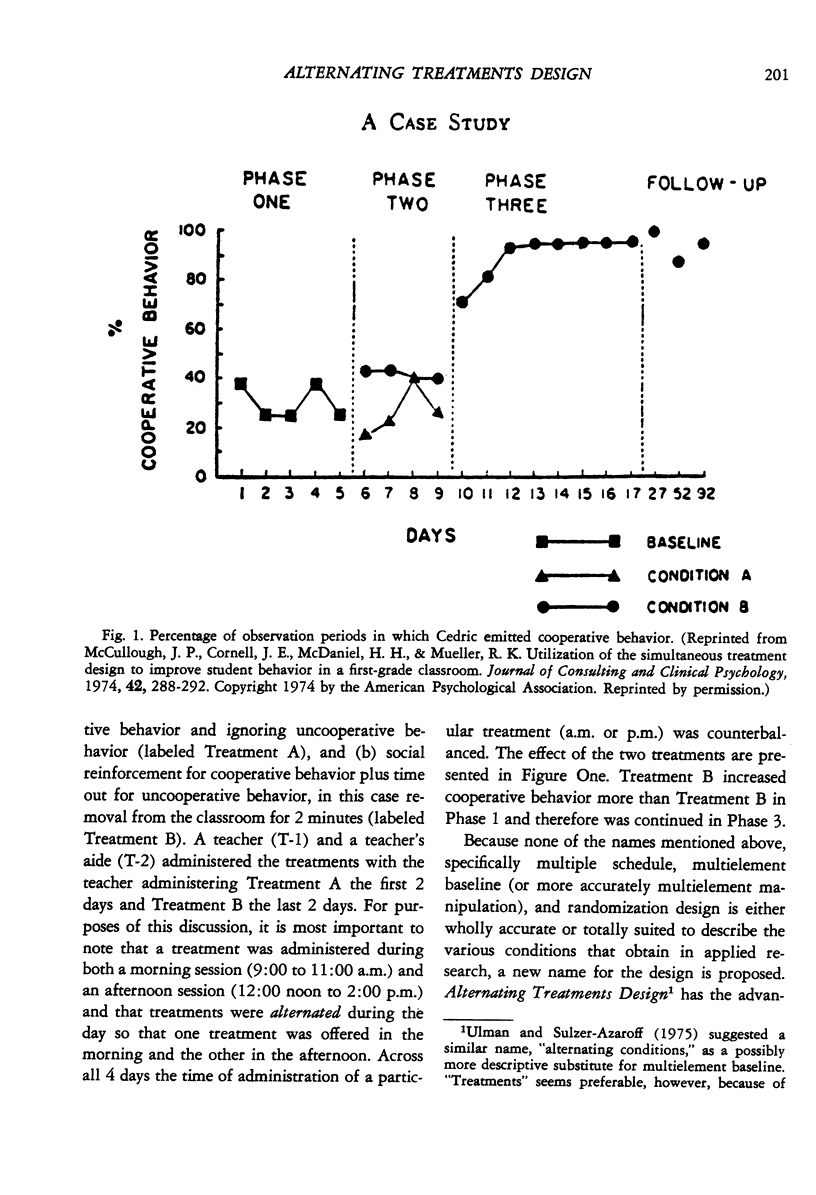
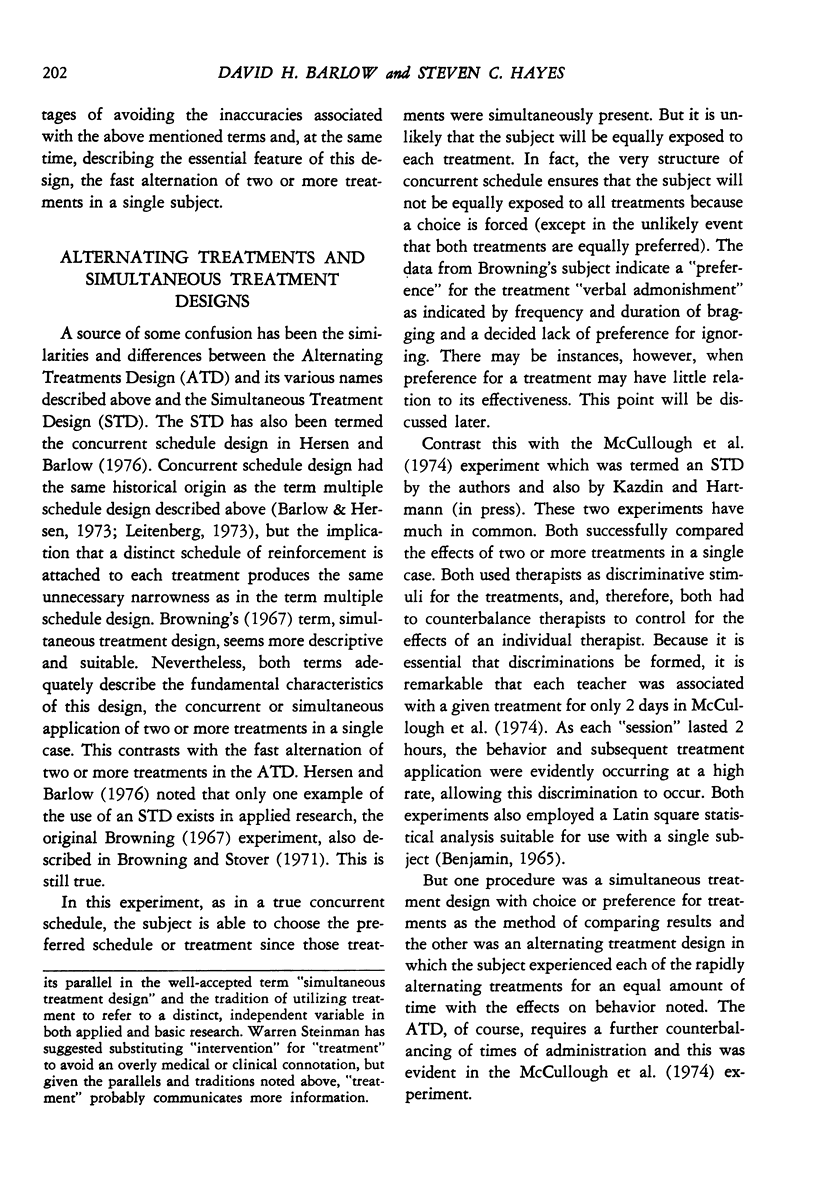
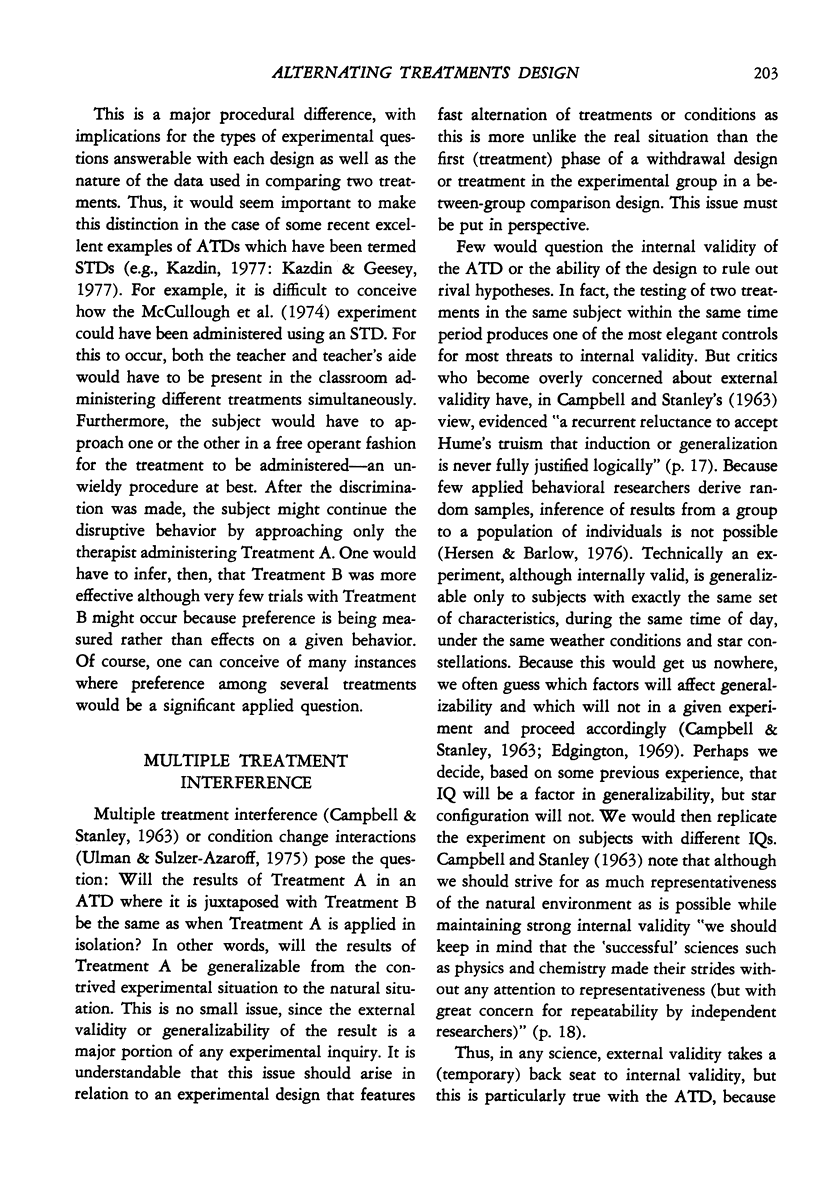
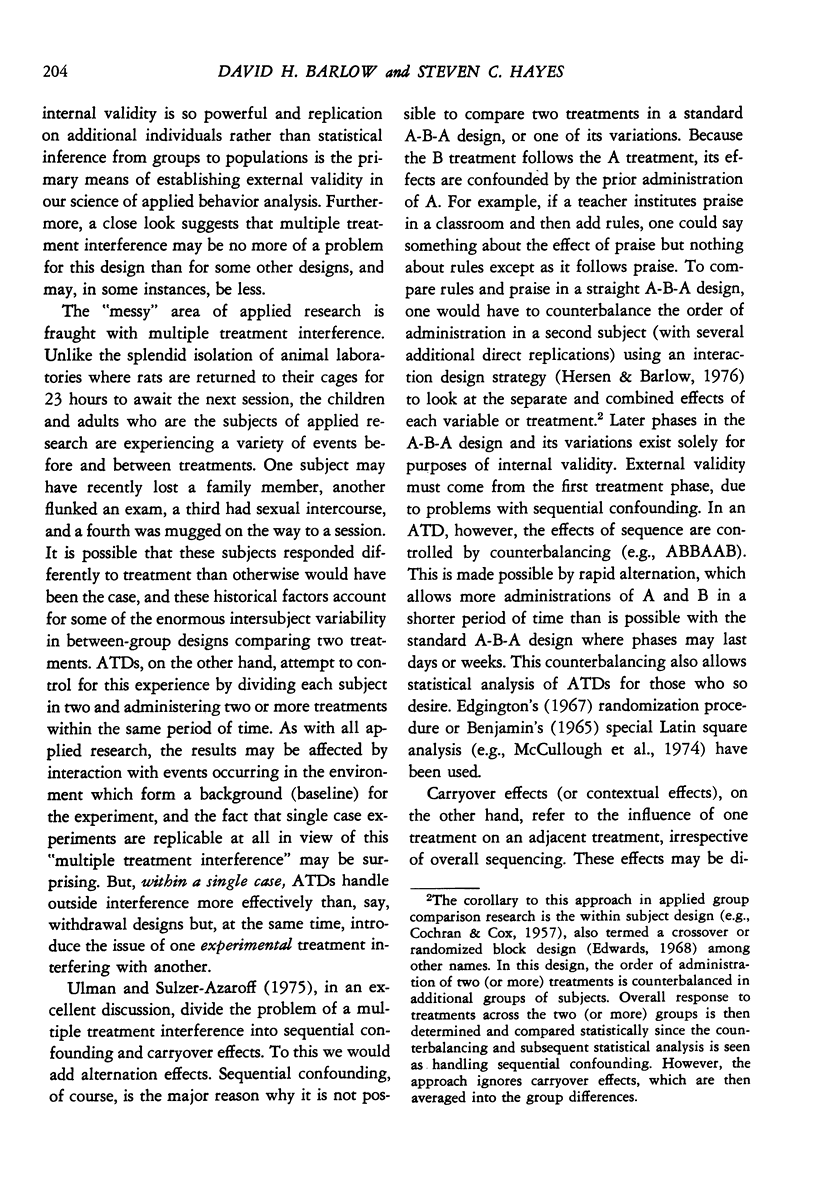
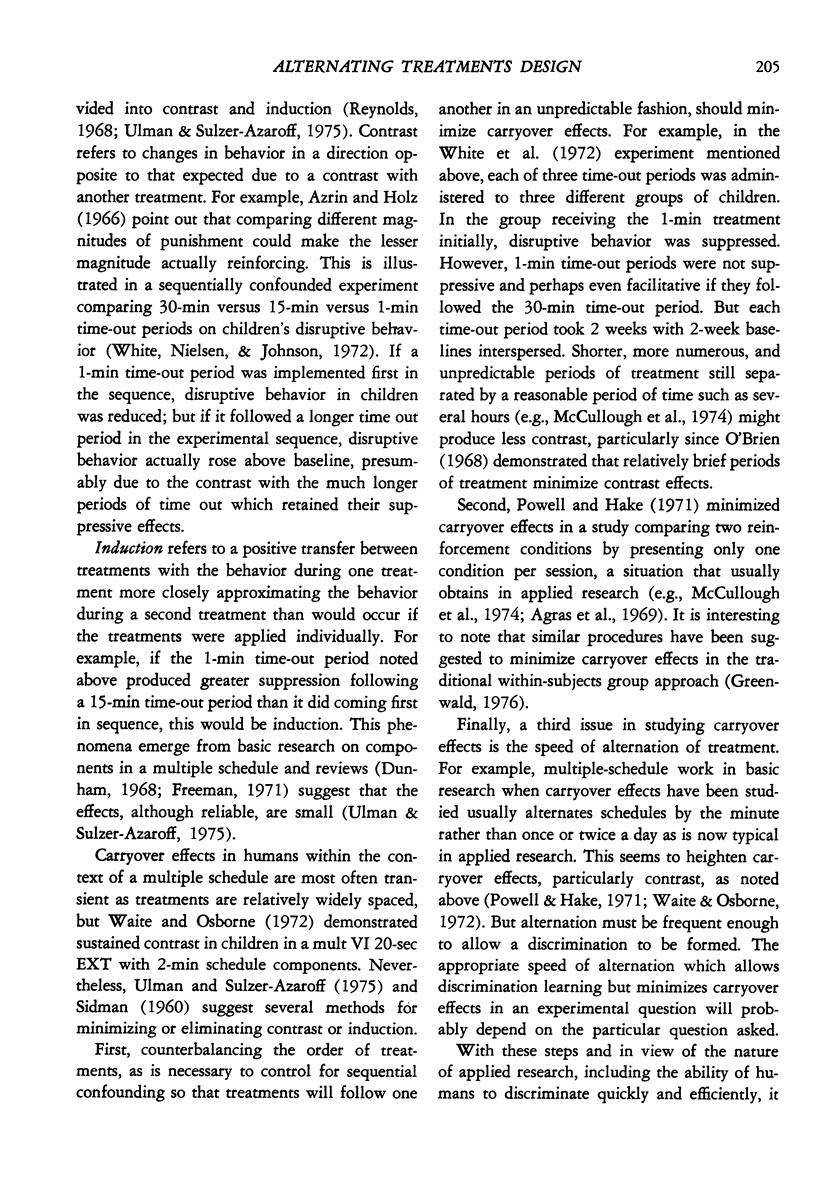
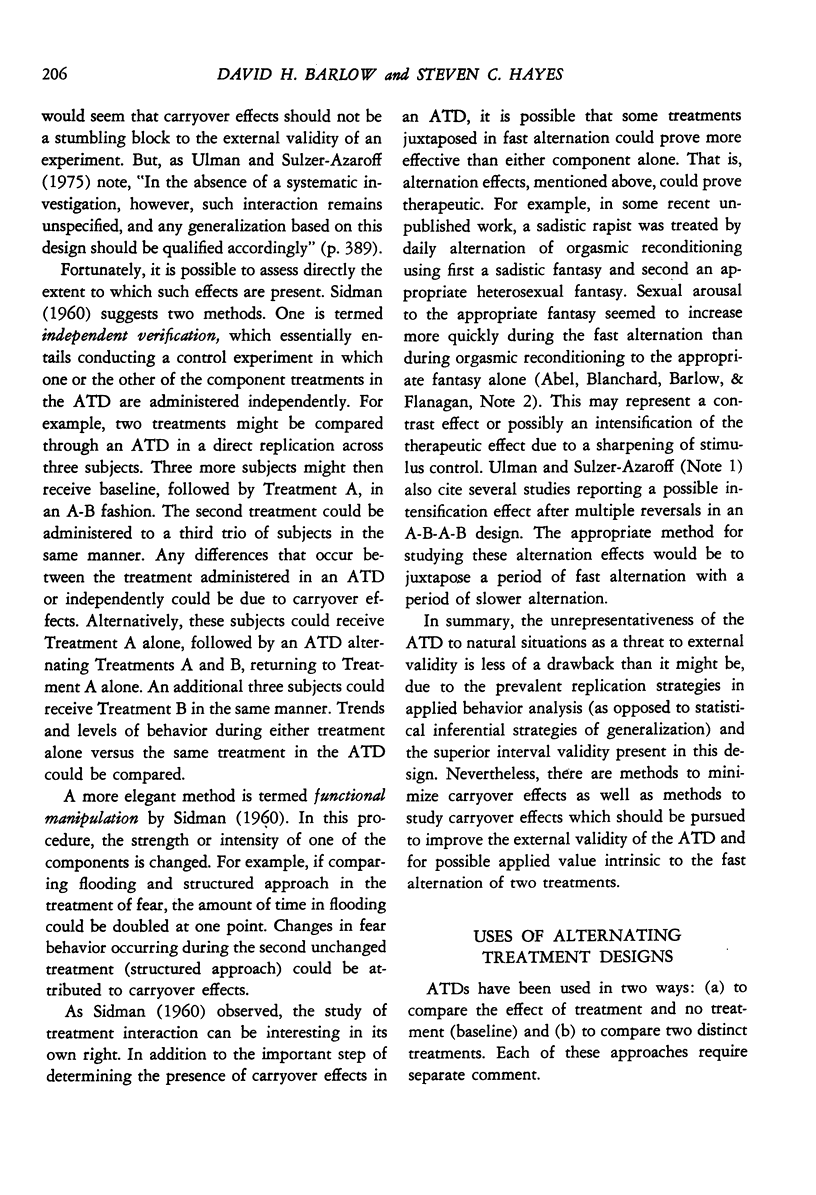
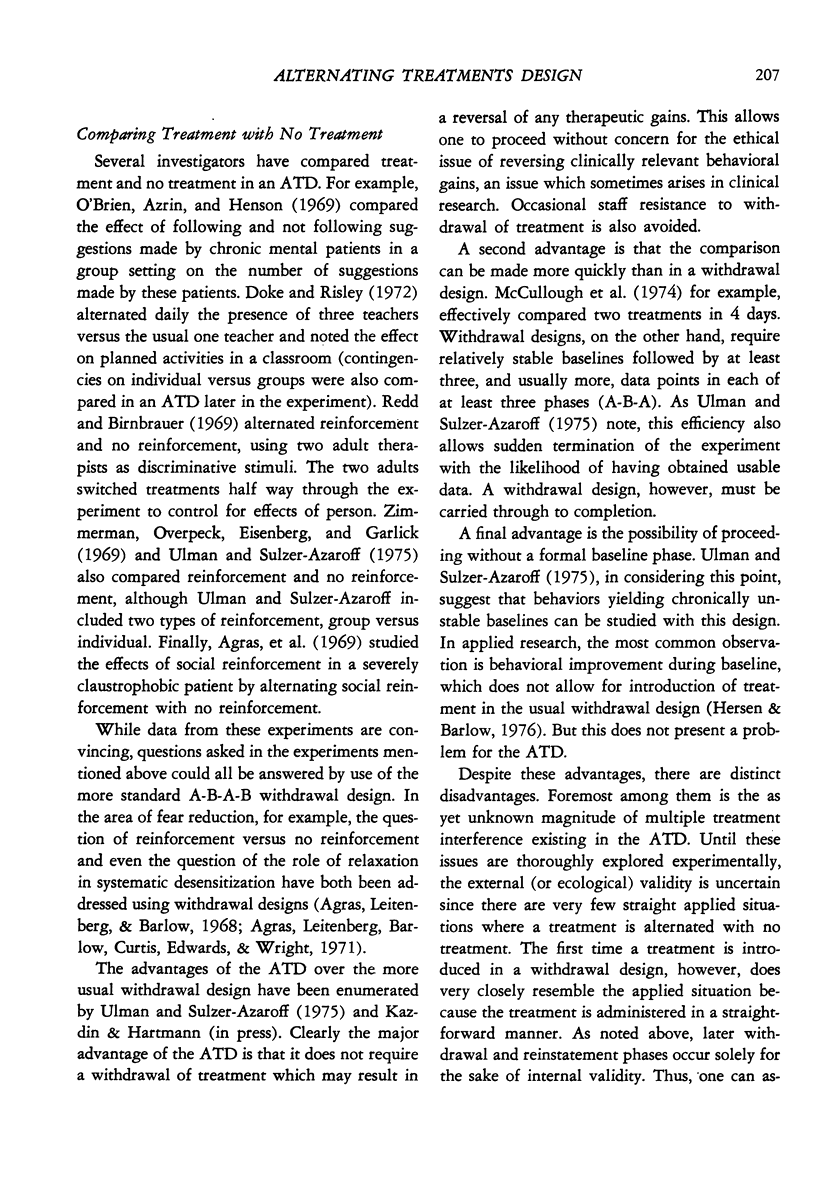
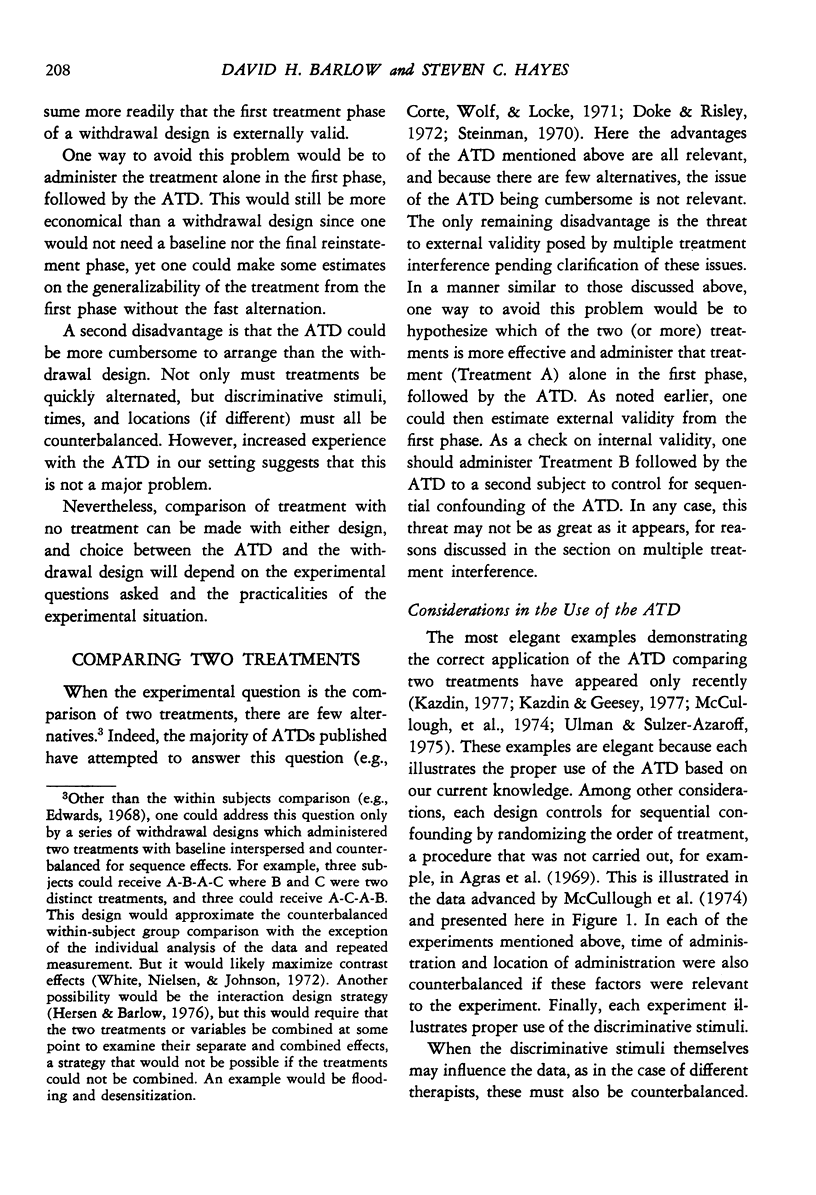
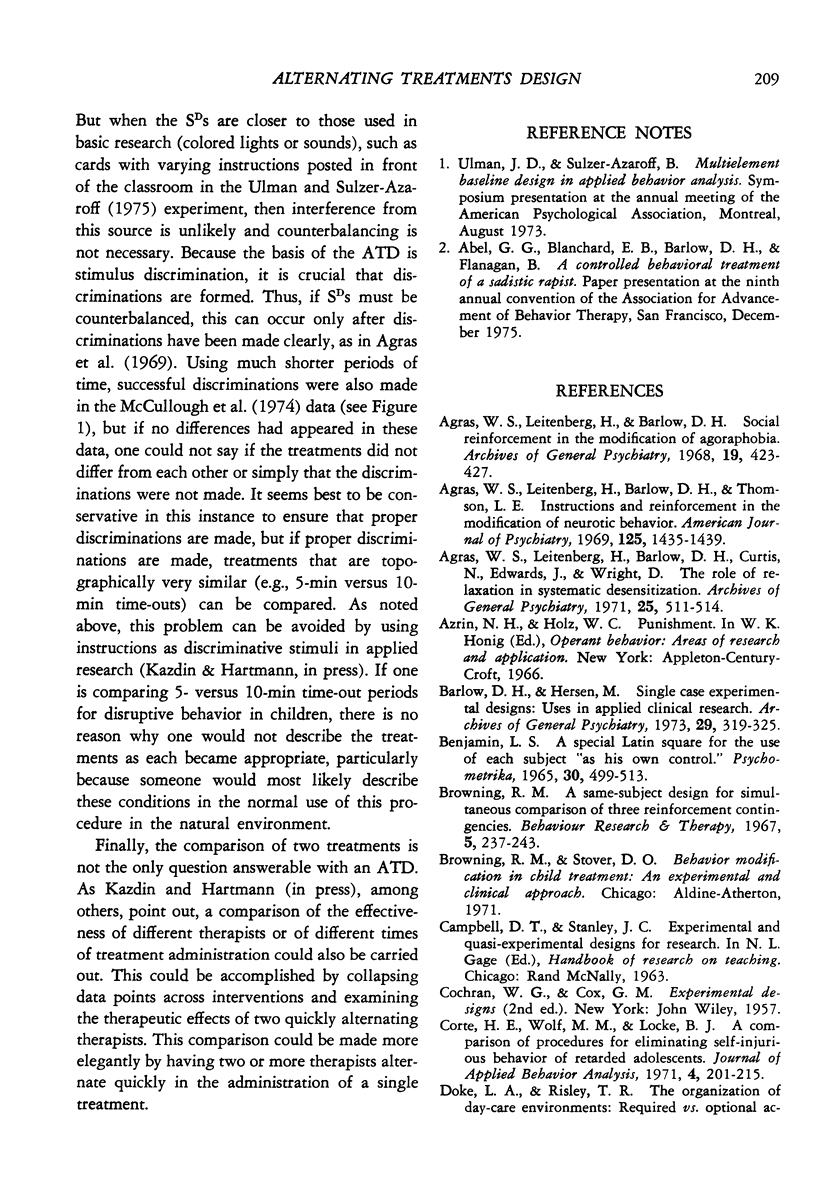
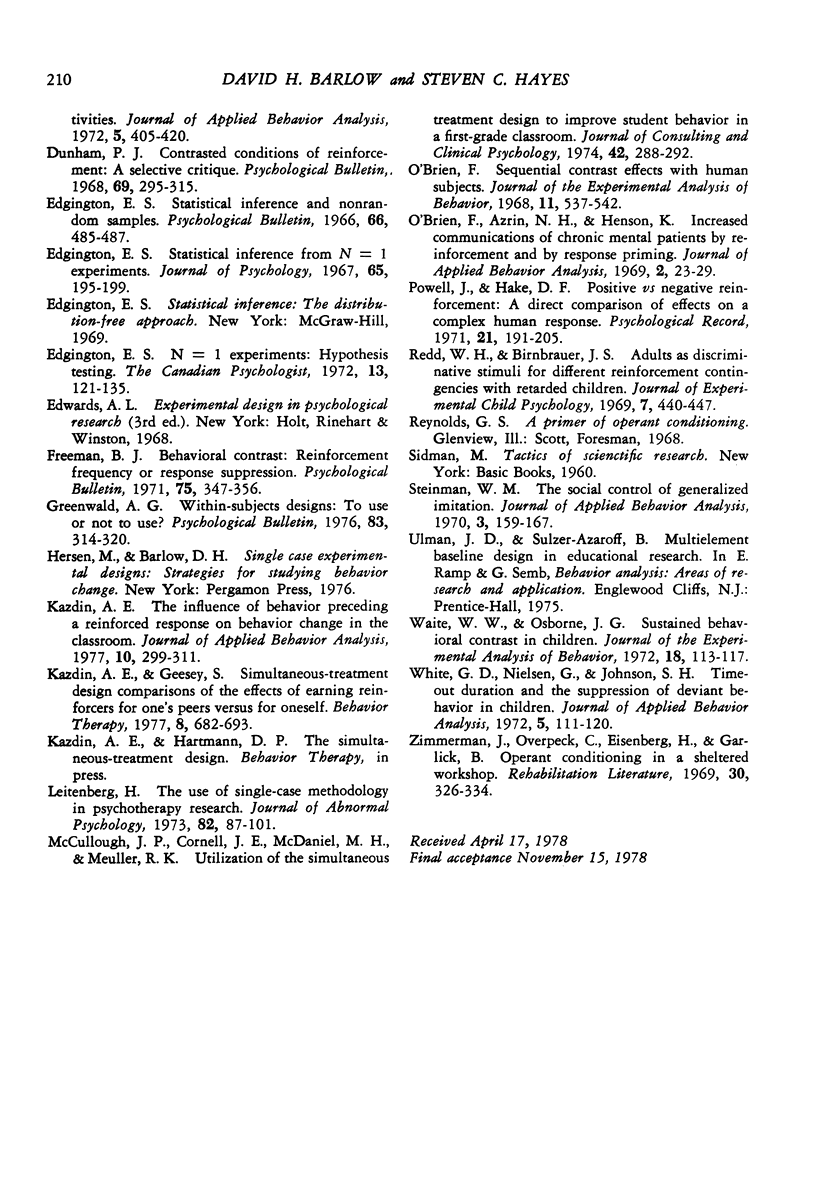
Selected References
These references are in PubMed. This may not be the complete list of references from this article.
- Agras S., Leitenberg H., Barlow D. H. Social reinforcement in the modification of agoraphobia. Arch Gen Psychiatry. 1968 Oct;19(4):423–427. doi: 10.1001/archpsyc.1968.01740100039006. [DOI] [PubMed] [Google Scholar]
- Agras S., Leitenberg H., Barlow D. H., Thomson L. E. Instructions and reinforcement in the modification of neurotic behavior. Am J Psychiatry. 1969 Apr;125(10):1435–1439. doi: 10.1176/ajp.125.10.1435. [DOI] [PubMed] [Google Scholar]
- Agras W. S., Leitenberg H., Barlow D. H., Curtis N. A., Edwards J., Wright D. Relaxation in systematic desensitization. Arch Gen Psychiatry. 1971 Dec;25(6):511–514. doi: 10.1001/archpsyc.1971.01750180031005. [DOI] [PubMed] [Google Scholar]
- Barlow D. H., Hersen M. Single-case experimental designs. Uses in applied clinical research. Arch Gen Psychiatry. 1973 Sep;29(3):319–325. doi: 10.1001/archpsyc.1973.04200030017003. [DOI] [PubMed] [Google Scholar]
- Benjamin L. S. A special Latin square for the use of each subject "as his own control". Psychometrika. 1965 Dec;30(4):499–513. doi: 10.1007/BF02289540. [DOI] [PubMed] [Google Scholar]
- Browning R. M. A same-subject design for simultaneous comparison of three reinforcement contingencies. Behav Res Ther. 1967 Aug;5(3):237–243. doi: 10.1016/0005-7967(67)90038-1. [DOI] [PubMed] [Google Scholar]
- Corte H. E., Wolf M. M., Locke B. J. A comparison of procedures for eliminating self-injurious behavior of retarded adolescents. J Appl Behav Anal. 1971 Fall;4(3):201–213. doi: 10.1901/jaba.1971.4-201. [DOI] [PMC free article] [PubMed] [Google Scholar]
- Doke L. A., Risley T. R. The organization of day-care environments: required versus optional activities. J Appl Behav Anal. 1972 Winter;5(4):405–420. doi: 10.1901/jaba.1972.5-405. [DOI] [PMC free article] [PubMed] [Google Scholar]
- Dunham P. J. Contrasted conditions of reinforcement. A selective critique. Psychol Bull. 1968 May;69(5):295–315. doi: 10.1037/h0025690. [DOI] [PubMed] [Google Scholar]
- Edgington E. S. Statistical inference and nonrandom samples. Psychol Bull. 1966 Dec;66(6):485–487. doi: 10.1037/h0023916. [DOI] [PubMed] [Google Scholar]
- Edgington E. S. Statistical inference from N--1 experiments. J Psychol. 1967 Mar;65(2):195–199. [PubMed] [Google Scholar]
- Kazdin A. E. The influence of behavior preceding a reinforced response on behavior change in the classroom. J Appl Behav Anal. 1977 Summer;10(2):299–310. doi: 10.1901/jaba.1977.10-299. [DOI] [PMC free article] [PubMed] [Google Scholar]
- Leitenberg H. The use of single-case methodology in psychotherapy research. J Abnorm Psychol. 1973 Aug;82(1):87–101. doi: 10.1037/h0034966. [DOI] [PubMed] [Google Scholar]
- O'Brien F. Sequential contrast effects with human subjects. J Exp Anal Behav. 1968 Sep;11(5):537–542. doi: 10.1901/jeab.1968.11-537. [DOI] [PMC free article] [PubMed] [Google Scholar]
- O'brien F., Azrin N. H., Henson K. Increased communications of chronic mental patients by reinforcement and by response priming. J Appl Behav Anal. 1969 Spring;2(1):23–29. doi: 10.1901/jaba.1969.2-23. [DOI] [PMC free article] [PubMed] [Google Scholar]
- Redd W. H., Birnbrauer J. S. Adults as discriminative stimuli for different reinforcement contingencies with retarded children. J Exp Child Psychol. 1969 Jun;7(3):440–447. doi: 10.1016/0022-0965(69)90006-x. [DOI] [PubMed] [Google Scholar]
- Steinman W. M. The social control of generalized imitation. J Appl Behav Anal. 1970 Fall;3(3):159–167. doi: 10.1901/jaba.1970.3-159. [DOI] [PMC free article] [PubMed] [Google Scholar]
- Waite W. W., Osborne J. G. Sustained behavioral contrast in children. J Exp Anal Behav. 1972 Jul;18(1):113–117. doi: 10.1901/jeab.1972.18-113. [DOI] [PMC free article] [PubMed] [Google Scholar]
- White G. D., Nielsen G., Johnson S. M. Timeout duration and the suppression of deviant behavior in children. J Appl Behav Anal. 1972 Summer;5(2):111–120. doi: 10.1901/jaba.1972.5-111. [DOI] [PMC free article] [PubMed] [Google Scholar]
- Zimmerman J., Overpeck C., Eisenberg H., Garlick B. Operant conditioning in a sheltered workshop. Further data in support of an objective and systematic approach to rehabilitation. Rehabil Lit. 1969 Nov;30(11):326–334. [PubMed] [Google Scholar]


